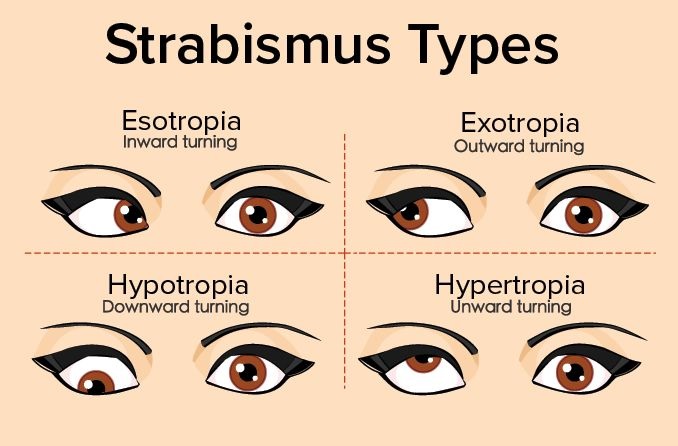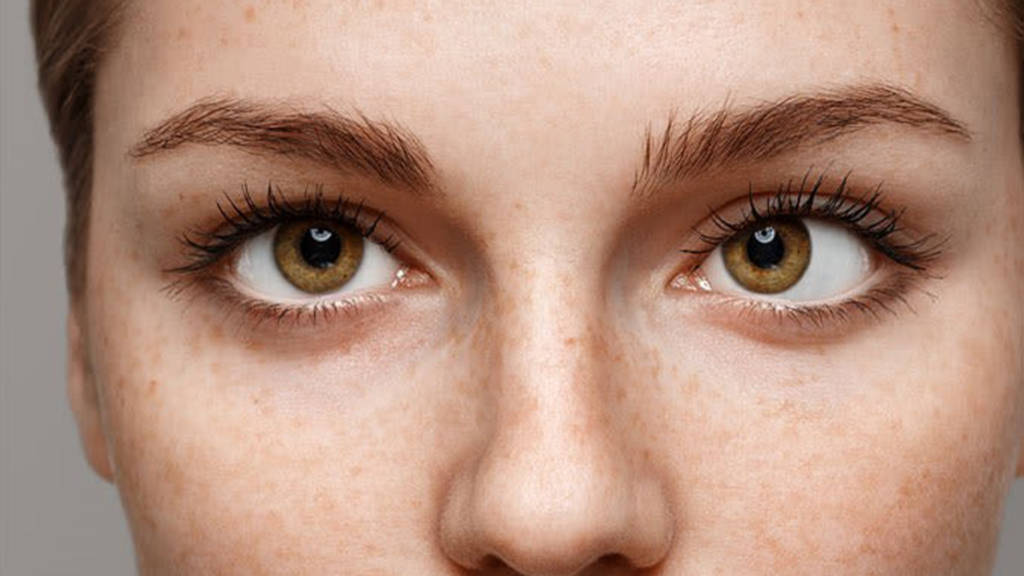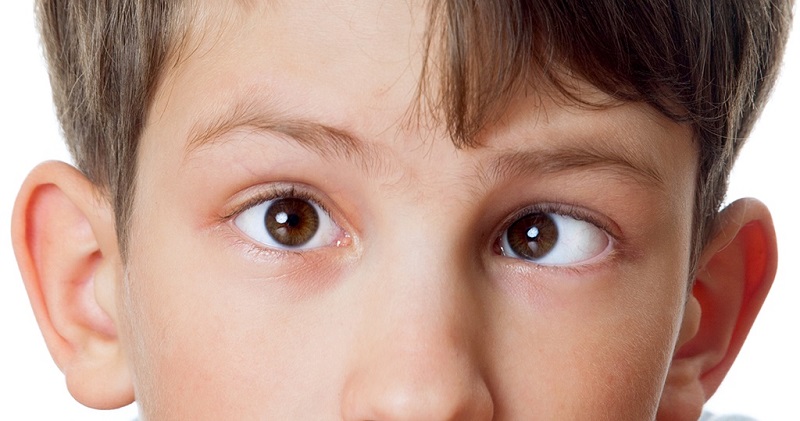Strabismus (strabismus, heterotropia) – a disease in which one eye is directed to the object in question, and the second – either to the nose or to the temple. It rarely happens when the deviation from the central axis occurs up or down. In most cases, the disease appears in early childhood – at 2-3 years.
With a symmetrical position of both eyes and the presence of binocular vision, the image obtained with each eye merges into a single picture. When one of the eyes deviates to the side for a long time, the brain does not perceive information from it. Thus, in addition to strabismus, a concomitant disease develops – amblyopia (“lazy eye”), when the squinting eye is partially or completely excluded from the visual process.

Such vision is devoid of stereoscopic ability, that is, it does not allow a person to correctly determine the size and volume of an object.
Types of Strabismus
By type of deviation:
• Converging strabismus (esotropia) – the eye deviates to the bridge of the nose; the condition is often accompanied by farsightedness.
• Divergent strabismus (exotropia) – the eye is tilted to the temple; the condition can be triggered by myopia.
• Vertical strabismus – the eye is tilted up (hypertropia) or down (hypotropia).
• Mixed strabismus – combines several forms at once.
According to the period of occurrence:
• Acquired strabismus – a violation occurs against the background of refractive errors (farsightedness, myopia and astigmatism) or due to injuries, illnesses or stress. Most often, pathology is observed in children from 1.5-4 years.

Origin:
• Concomitant strabismus – the eyes deviate alternately (either left or right), while the angle of deviation from the central axis is approximately the same.
• Paralytic strabismus – one eye is completely or partially immobilized due to dysfunction of the oculomotor muscles.
Surgical Treatment:
A reliable method for the treatment of strabismus, which allows you to restore a symmetrical or close to symmetry position of the eyes by changing the muscle balance.
The operation to correct strabismus is aimed at strengthening or weakening the work of the muscles that move the eyeball.
Restoring the correct position of the eyes creates conditions for the normalization of binocular vision and self-correction of visual functions after surgery. Also, vision correction can be carried out by performing a set of special exercises or using hardware therapeutic treatment procedures.
As a result of the operation to correct strabismus, in addition to therapeutic, a significant cosmetic effect is achieved.
Features of the Strabismus Treatment in children:
It’s important to understand!
The developing visual system of a growing organism is susceptible both to negative factors affecting it and to therapeutic effects. Timely started treatment makes it possible to defeat the disease in the most gentle ways!
Our Hospitals have the best conditions for the treatment of strabismus in children. The experience and qualifications of our doctors, the ability to use new generation equipment – Astramedica can offers successful application of the most gentle modern and effective methods of getting rid of a dangerous disease!

The main role in the treatment of strabismus in children is played by therapeutic treatment – both occlusion and apparatus procedures, which young patients, as a rule, attend with pleasure, since healing sessions using apparatus techniques are carried out in a fun way. more about the hardware treatment of strabismus in children Effective in the fight against children’s strabismus and physiotherapy, and sets of special exercises for the eyes.
Features of the Strabismus Treatment in adults:
In the treatment of strabismus in adults, the most effective is most often radical surgical treatment – an operation to correct strabismus. However, the choice of the optimal method of treatment in each case is carried out by a doctor – after a thorough examination of the patient’s visual system.
Surgical intervention makes it possible to correct a cosmetic defect – as a rule, which is a psychologically traumatic factor for people suffering from strabismus. But to restore visual functions after surgery, therapy aimed at correcting binocular vision is required. The equipment of our hospitals makes it possible to successfully apply all the most effective methods of treating strabismus.
Benefits of choosing AstraMedicaGroup
Only top qualified doctors
JCI certificated hospitals
Free COVID-19 Test before departure
4 nights in a 5-star hotel in Istanbul
Costs for laboratory, medication and equipment
Pre/post-operative tests
Free Istanbul tours
Latest technologies
Excelent travel assistance
All-round VIP transfer
Credit / Debit cards accepted
No prepayment
Personal assistants speak in English
24/7 customer service
